I know AD620 is an old part but it is available at my place. I intend to develop a Load Cell amplifier. Load cell is 2mV/V. I am planing to use AD620 for it. Following are my calculations:
- Excitation Voltage for Load Cell = 5V
- Full Scale for load of 140 kg = 2mV X 5V = 10mV
- Gain = Vout/Vin = 5000mV/10mv = 500
- From formula of Rg we calculate it to be 98.99 Ohm
I have worked on Following schematic:

What is the problem?
- If I leave the pin 5 open then Min Voltage is 1.9 and max is 4.2 volts. If pin5 is grounded then min voltage is 0.6 and max is 1.9 (strange)
- the max voltage (4V) is reached at 6 mv Input. even gain calculation is done. But we have added 100 Ohm resistance instead of 98.99 Ohm.
- Is there any difference between AD620AN, AD620AR and AD620ANZ ?
- In some circuits i see that at sense + and sense - sometimes before feeding these to operational amplifiers some resistance is added. what is the purpose of adding these keeping in mind the voltage is already in mV
- Can you suggest load cell amplifier other than INA125 because that is not available

